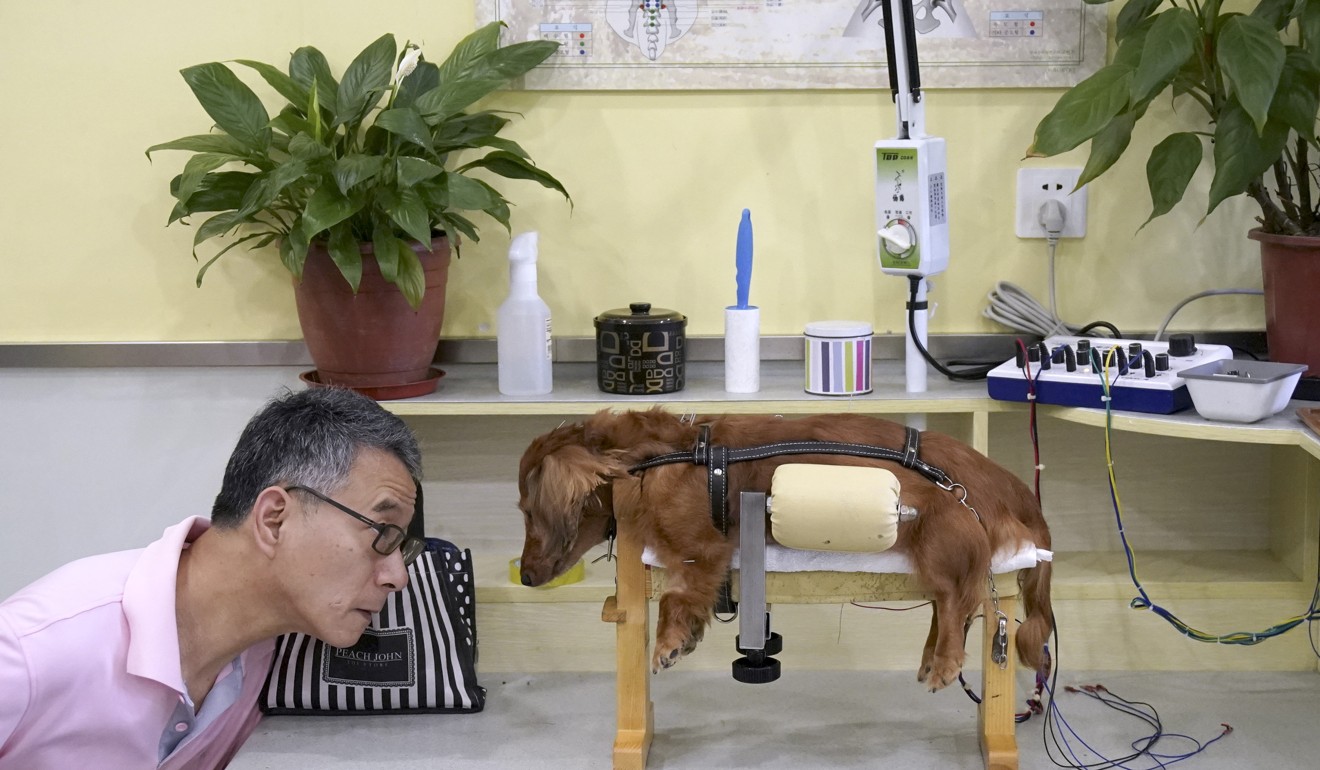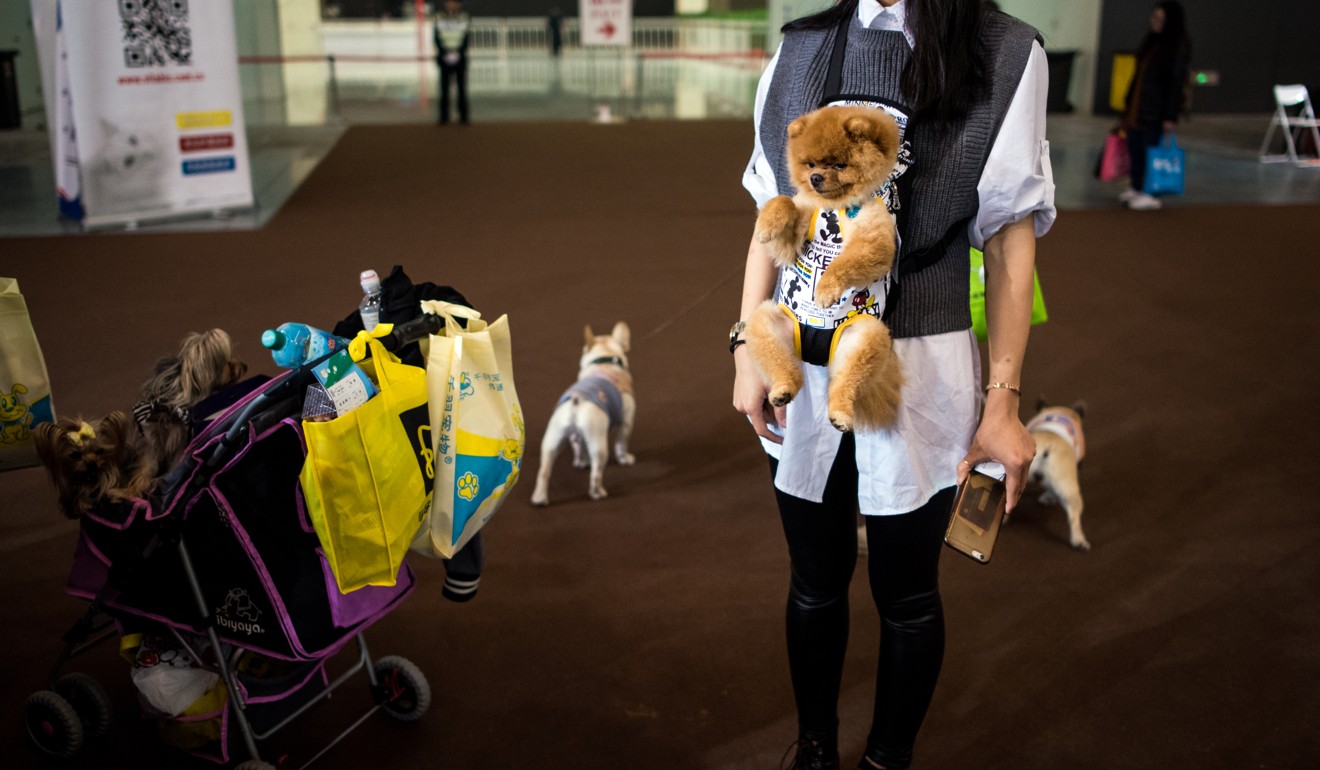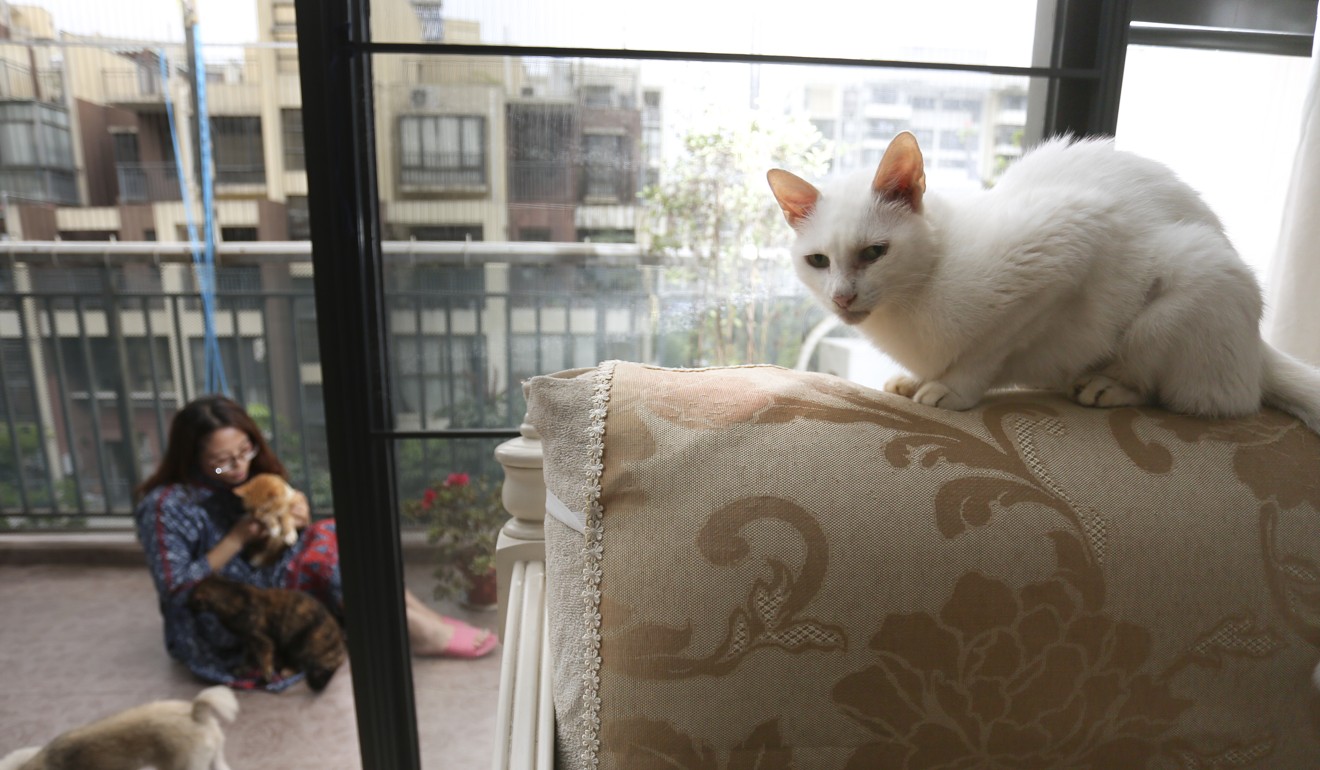
Why it’s no longer a dog’s life for man’s best friend in China
Millions of consumers eager to pamper their furry friends are making the pet products industry an increasingly lucrative business
Fang Fang, a mother of one and head of the Angels Chorus choir in Beijing, takes care of her pets as conscientiously as she would close family members.
Living with five adopted cats, one 16-year-old dog, three hamsters and an aquarium full of fish, Fang spends at least 4,000 yuan (US$600) each month on them, buying top quality food and keeping her ageing dog healthy with nutritional supplements.
The expense includes weekly fees for caretakers for her fish and coral. She also spends 100 yuan each day on house cleaning, buys imported essential oils to deodorise the air, takes her dog for a bath once a week and physical checks twice a year. If the dog catches a cold, the treatment costs her 1,500 yuan each time.
In addition, Fang has been donating 1,000 yuan to stray animal protection organisations each month for the past nine years.

“I just cannot resist the temptation of taking care of small animals. They are my kids. If you love them, they return all your love,” Fang said.
Fang’s affection for her pets mirrors a popular trend in increasingly rich China where owning a pet is no longer criticised as a bourgeois pastime as it was during the Mao era.
Pets are not only seen as good companions but also one of China’s burgeoning consumption markets.
Surging incomes, demographic changes such as young people moving to big cities, the growing number of empty nesters and dink families (double income, no kids) stand behind the rising market, according to an annual survey jointly released in September by Pet Fair Asia, the biggest exhibition for pet suppliers in Asia-Pacific, and Goumin.com, one of the largest pet websites in China.
The survey found nearly 60 million out of a total of 340 million households have pets (2 per cent more than last year).
Spending on them is expected to reach 134 billion yuan this year and grow more than 30 per cent annually in the coming four years.
It is estimated that Chinese residents had more than 100 million pets at the end of 2016, the second largest number in the world after the United States. Pet dogs outnumbered pet cats by two to one.

Fang’s expenditure on her furry friends is much higher than the national average, which was expected to be 6,500 yuan each year according to the survey.
In addition to her monthly spend, there were also costly one-off purchases, Fang said. She spent 9,000 yuan on solid wood furniture for her cats, paid over 20,000 yuan for the fish tank, and once replaced her sofa twice in the space of a year because the cats like to scratch the filling.
Then there are the medical costs.
“One of my friends who is a teacher spent two months at home for the summer holiday this year. After the autumn semester started, her cat refused to eat or drink, and was sent to a pet clinic for a week, spending nearly 10,000 yuan for various checks.”
She said they only thing they discovered was that the cat was pining because it had not readjusted to its owner going to work every morning.
According to the survey, more than 70 per cent of pet industry companies have seen their income increase by more than 20 per cent, and half of the market incumbents started their businesses just five years ago.
The market potential is not only limited to food and medical care.
A wider range of services such as professional training in pet schools, beauty salons and burial services have also reported a growing demand.
A report on Chinese state radio said pet owners in big cities were willing to spend thousands of yuan to bury their late companions in pet cemeteries which offered interment services as sophisticated as those available for humans.
Local media also reported that Wenzhou in Zhejiang province has been transforming one of its towns into a pet paradise, offering attractions that include food, accommodation, pet filming, beauty contests and even matchmaking.

However, despite the surging industry, finding good-quality products and pet care services remained a major concern for pet owners, the survey found.
Zha Yin, an online game developer in Beijing, has two pet cats and said he had already spent around 150,000 yuan on them in the past two years.
“There are some brands of cat food with harmful ingredients. So much information on the internet is hard to confirm,” he said.
“There are many which are registered overseas while produced domestically but branded as imported products. The market is chaos.”
Spending on pets in China is expected to reach 260 billion yuan by 2020 led by rapid growth in pet food and veterinary industries, the leading brokerage firm China International Investment Corporation said in a research report published in October.
It estimated that Chinese pet food companies, where the market is estimated to grow by 20 per cent each year, will face strong competition as they try to break the dominance of overseas brands.
Looking ahead, Zha plans to set up business of his own providing information to pet owners.
He hopes to develop a mobile phone app to offer “convenient and one-stop services”, including price rankings, standardised and official ingredient information, and knowledge on how to select food and other products for pets.
“Once the users open the app, all their needs for taking care of their cats can be found. That is what I want to do,” he said.

